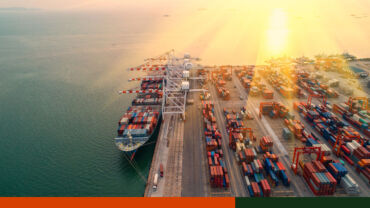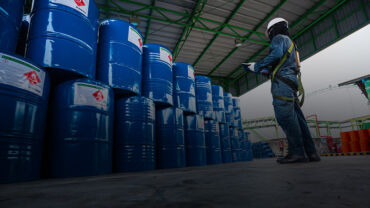In the aftermath of Brexit, most companies that conduct business in the United Kingdom (UK) and European Union (EU) have absorbed the initial shock and are now looking for more stable, long-term solutions to the challenges posed by the UK’s new trade regime.
In a recent webinar, global trade experts from Thomson Reuters and EY discussed some of the tactics and strategies companies should be considering if they want to avoid unnecessary complications from Brexit, including shipping delays, inventory shortages, cost overruns, and penalties.
_____________________________________________________________________________________
Register to view our full on-demand webinar, Key considerations for post-Brexit global trade management.
_____________________________________________________________________________________
There is no one-size-fits-all answer for addressing the complexities of Brexit because the new regime affects every company differently, depending on their operational footprint and specific business challenges. Nevertheless, general principles can help guide a company’s decision-making when it comes to managing ongoing uncertainty and supply chain disruptions stemming from Brexit.
Global trade in flux
It’s worth noting that Brexit is not happening in a vacuum. Companies grappling with Brexit’s various challenges are also operating in a larger framework of global trade where volatility and risk are escalating, international alliances are shifting, and once-stable supply chains are being restructured in response to a great deal of geopolitical maneuvering.
For example, the UK itself has ratified more than thirty new trade agreements since Brexit went into effect on Jan. 1, 2021, most recently with Norway, Iceland, and Liechtenstein. Elsewhere, trade tensions between the U.S. and China are forcing countries to choose sides, particularly with regard to their technological development. And competition for products and materials as the world emerges from the COVID-19 pandemic has become extraordinarily intense.
Companies trying to remain competitive in this environment face a number of challenges, including:
- the overall speed of change, which has been accelerated by technology
- the need to upgrade and stay current with changing technology
- governmental demands to digitize customs and taxation procedures
- lack of resources to move quickly and remain nimble
- indecisive or conflicting leadership and decision-making
Rules of origin requirements post-Brexit
Both the UK and EU have agreed to apply several temporary easements in relation to rules of origin. Until December 31, 2021, businesses do not need supplier declarations in place when goods are exported. Businesses making use of preferential rules of origin must be confident that the goods qualify and may be asked to retrospectively provide supplier’s declarations. However, as of January 1, 2022, proof of origin documents will need to be declared.
Meeting rules of origin requirements is one of the main requirements for enjoying tariff-free trade between the EU and UK. But beginning in 2022, companies can expect more frequent trade compliance audits and harsher penalties related to rules-of-origin declarations, so ensuring that processes are in place to accurately identify and report product origin information is essential.
At the very least, companies need to:
- develop an efficient process for classifying products in both the EU and UK
- analyze supply chain flows to understand country origins for all products and materials
- establish documentation controls from suppliers for every step of the production process and each transaction along the way
- keep accurate, accessible records for customs audit purposes, including required certifications (e.g., animal health certificates)
- maintain a robust origin management system to prevent errors and reduce risk
Managing customs declarations after Brexit
For companies that are still adapting to these new customs regulations and searching for ways to minimize the business impact of Brexit, there are several other options to consider.
For example, small and mid-size companies that aren’t accustomed to filing frequent customs declarations might want to consider hiring a third-party customs agent to do the work for them. The caveat here is the additional expense, as agents tend to charge anywhere from 25 to 50 pounds per transaction – sometimes even higher. But the math can work if a company has a relatively small number of transactions and doesn’t have the resources or desire to bring the customs declaration function in-house.
That said, the opposite is also true: If a company has a high volume of transactions that must be declared, a great deal of money can be saved over the long term by investing in the IT infrastructure, software, and training necessary to perform customs functions and VAT calculations internally. A properly customized global trade technology solution should contain all the templates necessary to track and report required declarations – and, once the system is set up, many of the processes involved can be entirely automated, which saves time and money and radically reduces the risk of errors.
Duty savings opportunities with free trade agreements
Given the new cost calculus for trading in and between the UK and EU, companies looking for strategic long-term solutions to Brexit-related cost increases should consider using the last half of 2021 to analyze free trade agreements (FTAs) in other countries where alternative supplies and materials might be sourced.
A more beneficial arrangement may only be “one FTA away,” after all, and a thorough FTA analysis can also serve as the foundation for a viable backup sourcing strategy should channeling goods through the EU and/or UK prove too costly or cumbersome.
_____________________________________________________________________________________
Read our article to learn how free trade agreements can help you maximize duty savings in your supply chain.
_____________________________________________________________________________________
One doesn’t have to start from scratch when analyzing FTAs, either. FTA management software is available to help identify viable FTAs and run “what if?” analyses on every product, part, or raw material in any given supply chain.
Global trade automation and compliance tools
In general, the additional customs information required to comply with Brexit puts a premium on accurate recordkeeping and precise, thorough knowledge of a company’s entire supply chain. These new customs procedures also render manual recordkeeping and many traditional border routines more or less obsolete.
For companies that want to manage their own customs declarations, product classification, and duty calculations, the most cost-effective solution is to embrace the technology and automation tools that can assist in virtually every aspect of global trade.
These include global trade management tools to:
- automate product classification
- automate documentation for rules of origin compliance
- manage import/export border compliance functions
- identify potentially useful FTAs, free trade zones, and other duty relief programs
- analyze data for risk factors and savings opportunities
- obtain required authorizations (e.g., for warehousing, processing, etc.)
- generate reports for customs compliance and audits
Brexit can certainly cause headaches for companies that aren’t prepared, but for companies that implement the right systems, it’s also possible to work within the rules to identify opportunities that can lead to a significant competitive advantage. To learn more, visit our Brexit resource hub and register to view our on-demand webinar Key considerations for post-Brexit global trade management.








